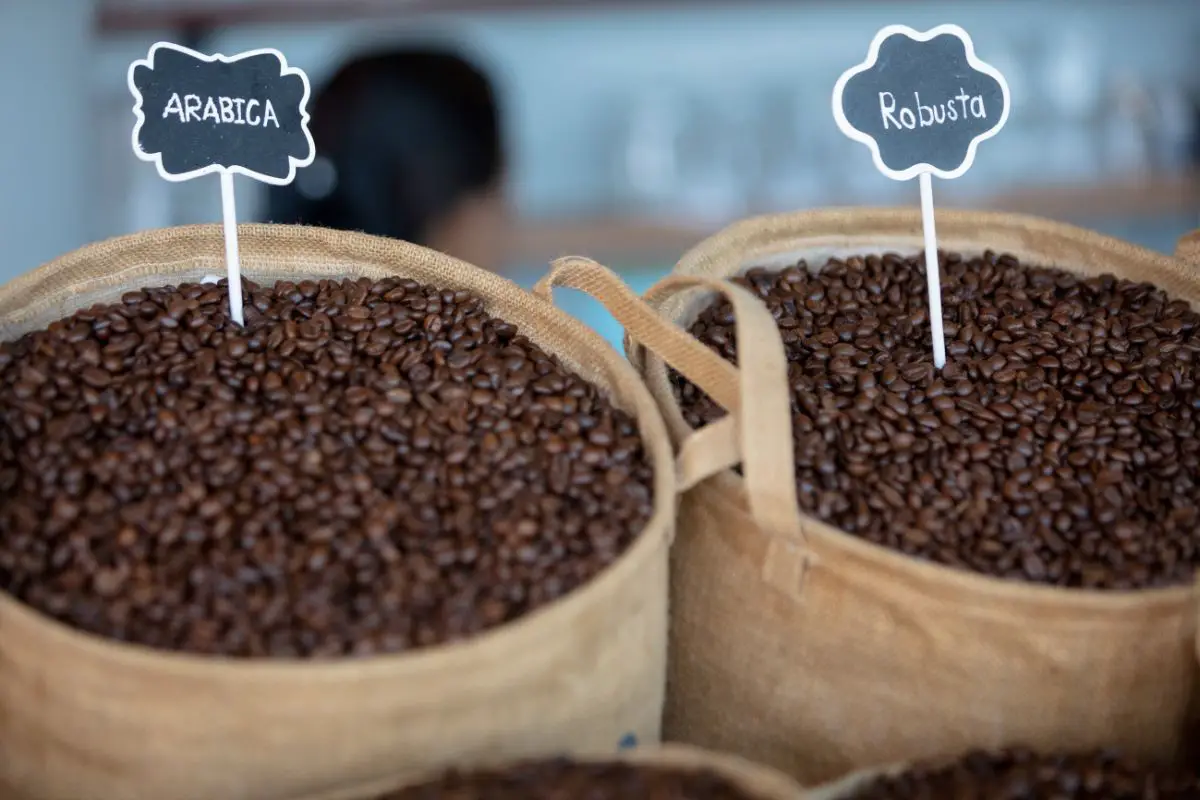Coffee is one of the most loved beverages. In this detailed article, you’ll learn more about the major types of coffee beans available in the coffee industry today. They include Arabica, Robusta, Excelsa, and Liberica.

- Arabica
Arabica, scientifically known as Coffea arabica, is the most popular coffee bean. In fact, Arabica accounts for about 60 percent of the total coffee produced globally. Arabica beans thrive in high altitude areas, which typically have plentiful shade and receive regular rainfall. Arabica coffee plants are easy to maintain. They’re relatively small, making it easier to prune them. They’re 6 feet tall at most. Their shortness also makes it easier to harvest coffee beans.
However, Arabica coffee is more delicate than other types of beans. It’s prone to diseases and its growth is influenced by the environment quite easily. Thus, it’s grown with a lot of care. If Arabica is grown in a climate where it can’t thrive, it’ll require more effort to maintain it.
Being the most popular coffee bean, Arabica is typically planted in large scale, in an agricultural practice known as monoculture. However, monoculture Arabica farming is prone to disaster. Since Arabica plants are prone to diseases, growing them in large scale makes the plants more prone to massive disease outbreaks like blight, thereby contaminating an entire Arabica coffee farm.
High-quality Arabica coffee is bright-bodied with satisfying acidity and several layers of intricate aromas and flavors. You can sample Arabica coffee on your front palate for the best results. Your front palate is where salinity and sweetness are most evident.
If you want to make the best Arabica brew at home, choose lower acidity and full-bodied Arabica coffee beans. However, it’s important to know that the overall quality of Arabica coffee reduces when served with creamer or cold. Arabica coffee tastes best when served hot. It’s also best for brewing with the drip or pour-over coffee method.
- Robusta
Robusta, scientifically known as Coffea caniphora, is the second most popular type of coffee in the world. Just like its name suggests, Robusta is immune to diseases and is not affected by its environment. It’s able to withstand several altitudes. However, it thrives best in areas that receive irregular rainfall and in hot climates.
Robusta beans have about twice the caffeine amount in Arabica beans. Its high caffeine content makes it truly robust. The high caffeine in Robusta coffee is responsible for its resistance to diseases.
You can sample Robusta coffee best with your back palate. It’s where bitter coffee notes are more evident. High-quality Robusta coffee features low acidity, smooth texture, and has chocolate notes in its flavor profile. Also, it’s heavy-bodied.
If you want to brew tasty Robusta coffee, consider choosing Robusta beans that have details on the package regarding how they were grown. Such information is often found on packages containing single-origin Robusta coffee. Some coffee farmers grow Robusta coffee in less favorable climates due to its robust nature, thereby producing sub-standard coffee. If you brew coffee with Robusta, only to end up with a rubbery tasting coffee with a flat scent, then you’ve probably bought sub-standard Robusta beans.
Robusta coffee is perfect for sugar and cream lovers. Top-quality Robusta doesn’t lose its flavor when you add sugar or milk. It’s great for making iced coffee and Vietnamese coffee.
- Excelsa
Excelsa, scientifically known as Coffea liberica var. dewevrei or Coffea excelsa is reclassified under the Liberica family. Excelsa differs from Liberica to an extent that some people consider it a separate coffee species. However, it was reclassified under the genus Liberica as it grows tall (about 20 to 30 feet like Liberica). Also, both thrive at the same altitudes. They also feature an almond-like coffee bean shape.
Excelsa is mostly grown across Southeast Asia. It accounts for about 7 percent of the coffee grown worldwide. It’s commonly used in coffee blends as it adds extra complexity and flavor. It mostly affects the back and middle palate.
Excelsa possesses a fruity and tart body. Its flavors are like those of light roast beans with roasty, dark notes. The mystery behind these notes lures coffee lovers to try Excelsa coffee.
- Liberica
Liberica, scientifically known as Coffea liberica, is the least commonly found type of coffee. However, it plays an important role in the history of coffee. In 1890, at least 90 percent of Arabica coffee in the world was wiped out by coffee rust. Government agents and farmers scrambled to resolve this problem. As a result, they turned to Liberica coffee. The Philippines was the first nation to try Liberica coffee. At that time, the Philippines was a United States territory. The decision to grow Liberica coffee in the Philippines boosted its economy as it was the sole coffee producer for some time.
After some time, the Philippines declared independence from the United States, thereby leading to a spat between the two nations. Consequently, the United States cut off supplies such as coffee. The supply of Liberica coffee went down and only made a comeback in 1995. The remaining Liberica plants were salvaged by conservationists and transplanted to coffee-growing regions in Filipino where Liberica would thrive. Unfortunately, this effort didn’t bear fruits since Arabica coffee regained its position as the most popular type of coffee. Today, it’s quite hard to find pure Liberica beans.
Liberica coffee beans are generally larger than other coffee beans and are the only type of coffee beans with an asymmetrical shape. Their aroma is unique and consists of fruity and floral notes. Also, Liberica coffee is full-bodied. It tastes relatively smoky and is often described to have a woody taste, unlike other coffees.